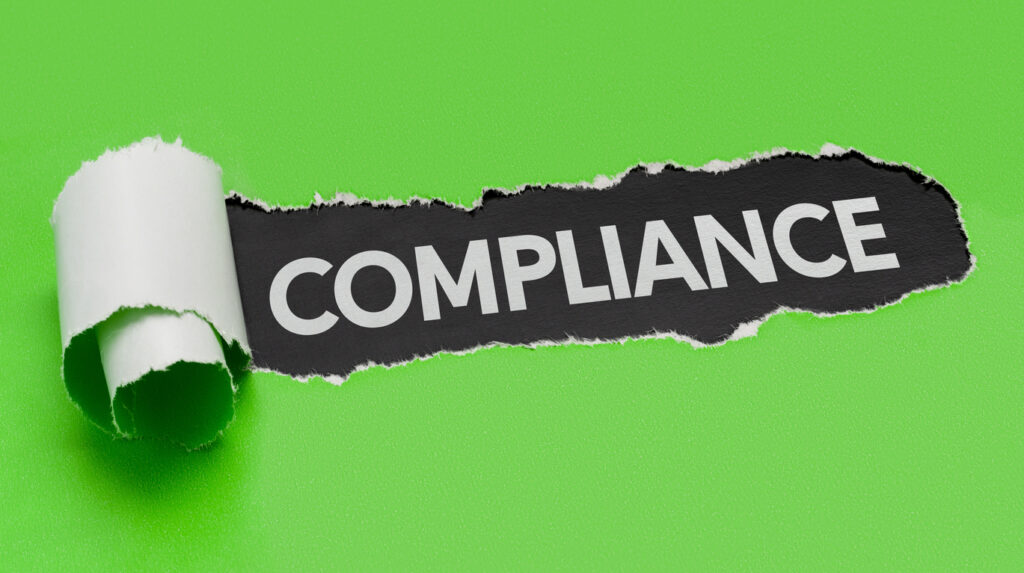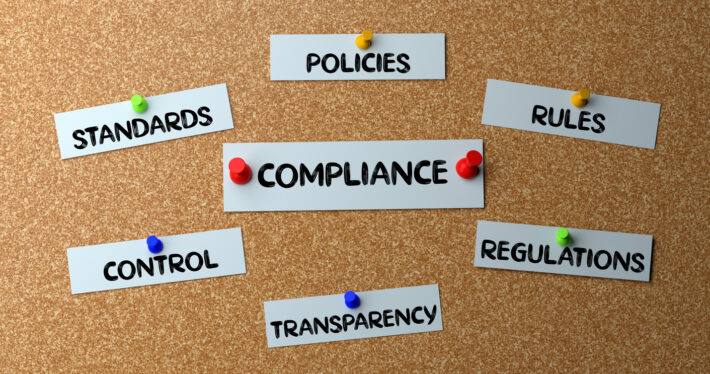OFCCP and Diversity: How Compliance Can Drive Workplace Inclusion

Are you struggling to navigate the complex world of OFCCP compliance while striving to create a diverse and inclusive workplace? You’re not alone. Many organizations are caught between meeting regulatory requirements and fostering a truly inclusive environment.
Imagine a workplace where compliance and diversity go hand in hand, driving innovation and success. The Office of Federal Contract Compliance Programs (OFCCP) can be more than just a set of rules to follow—it can be a powerful catalyst for positive change. But how can you turn compliance into a springboard for genuine inclusion?
Understanding OFCCP: Key Compliance Requirements
Overview of OFCCP’s mission and role
The Office of Federal Contract Compliance Programs (OFCCP) promotes workplace diversity and inclusion among federal contractors. Its primary mission is to ensure employers doing business with the federal government comply with nondiscrimination and affirmative action laws and regulations.
Essential regulations and guidelines
OFCCP enforces three key laws: Executive Order 11246, Section 503 of the Rehabilitation Act, and the Vietnam Era Veterans’ Readjustment Assistance Act (VEVRAA). These regulations prohibit discrimination based on race, color, religion, sex, sexual orientation, gender identity, national origin, disability, or status as a protected veteran.
Affirmative Action Program (AAP) requirements
Federal contractors are required to develop and maintain Affirmative Action Programs (AAPs). These programs analyze the workforce, set goals for underrepresented groups, and implement strategies to achieve those goals. AAPs must be updated annually and include specific components such as organizational profile, job group analysis, and placement goals.
Record-keeping and reporting obligations
OFCCP mandates comprehensive record-keeping practices for federal contractors. This includes maintaining employment records, applicant data, and documentation of reasonable faith efforts to increase diversity. Contractors must also submit annual EEO-1 reports and be prepared for potential OFCCP audits, which may involve providing detailed workforce data and evidence of compliance efforts.
The Link Between OFCCP Compliance and Workplace Diversity
How Compliance Fosters Inclusive Hiring Practices
OFCCP compliance is crucial in fostering inclusive hiring practices among federal contractors. By adhering to OFCCP regulations, organizations must implement fair and unbiased recruitment processes. This includes developing comprehensive affirmative action plans that actively seek to diversify the workforce. Compliance measures encourage employers to cast a wider net when sourcing candidates, reaching out to underrepresented groups, and utilizing diverse job boards. Additionally, OFCCP guidelines promote objective selection criteria, reducing the potential for unconscious bias in hiring decisions.
Impact on recruitment and retention strategies
OFCCP compliance significantly influences recruitment and retention strategies. Companies must maintain detailed records of their hiring processes, leading to more structured and equitable recruitment practices. This data-driven approach helps identify areas where diversity efforts may fall short, allowing organizations to adjust their strategies accordingly. Moreover, compliance measures often result in improved workplace policies that support employee retention, such as fair promotion practices and equal access to training opportunities.
Promoting equal opportunity through compliance measures
Compliance with OFCCP regulations inherently promotes equal opportunity in the workplace. By enforcing non-discrimination policies and requiring regular analysis of employment practices, OFCCP compliance ensures that all employees and applicants are treated fairly, regardless of their protected characteristics. This commitment to equal opportunity extends beyond hiring, encompassing all aspects of employment, including compensation, promotions, and workplace accommodations. As a result, OFCCP compliance creates a more inclusive work environment where diversity can thrive.
Leveraging OFCCP Compliance for Enhanced Inclusion
Developing data-driven diversity initiatives
To leverage OFCCP compliance for enhanced inclusion, organizations must start with data-driven diversity initiatives. By analyzing workforce demographics, recruitment patterns, and promotion rates, companies can identify areas for improvement and set realistic diversity goals. This approach satisfies OFCCP requirements and provides a solid foundation for meaningful change.
Creating inclusive workplace policies
Inclusive workplace policies are essential for fostering a diverse and welcoming environment. These policies should address flexible work arrangements, parental leave, and religious accommodations. Organizations can ensure compliance by aligning these policies with OFCCP guidelines while creating a more inclusive workplace culture.
Implementing effective training programs
Effective training programs are crucial for promoting diversity and inclusion. These programs should cover unconscious bias, cultural competence, and inclusive leadership. By integrating OFCCP compliance requirements into these training sessions, companies can educate employees on legal obligations and the benefits of a diverse workforce.
Establishing accountability measures
Organizations must establish clear accountability measures to ensure the success of diversity and inclusion initiatives. This includes setting measurable goals, regularly assessing progress, and holding leadership accountable for results. By aligning these measures with OFCCP reporting requirements, companies can streamline their compliance efforts while driving meaningful change in workplace inclusion.
Now that we’ve explored leveraging OFCCP compliance for enhanced inclusion let’s examine some best practices for effectively managing compliance and diversity efforts.
Best Practices for OFCCP Compliance and Diversity Management
Conducting comprehensive self-audits
Regular self-audits are crucial for OFCCP compliance and diversity management. These audits help identify potential areas of non-compliance and opportunities for improvement in diversity initiatives. Implement a systematic review of hiring practices, compensation structures, and promotion patterns. Analyze data to uncover disparities and develop action plans to address them proactively.
Utilizing technology for compliance tracking
Leverage advanced software solutions to streamline OFCCP compliance and diversity management efforts. These tools can automate data collection, generate reports, and provide real-time insights into your organization’s diversity metrics. By utilizing technology, you can more effectively track progress, identify trends, and make data-driven decisions to enhance workplace inclusion.
Engaging leadership in diversity efforts
Leadership buy-in is essential for successful OFCCP compliance and diversity management. Educate executives on the business benefits of diversity and inclusion and involve them in setting and communicating diversity goals. Encourage leaders to champion diversity initiatives and hold them accountable for progress. This top-down approach ensures that diversity efforts are prioritized across the organization.
Fostering a culture of inclusion beyond compliance
While OFCCP compliance is crucial, true workplace inclusion goes beyond meeting regulatory requirements. Create an inclusive environment by implementing diversity training programs, establishing employee resource groups, and promoting open dialogue about diversity issues. Encourage employees to share their unique perspectives and experiences, fostering a sense of belonging for all team members.
Now that we’ve explored best practices for OFCCP compliance and diversity management let’s examine some common challenges organizations face in implementing these strategies and how to overcome them.
Overcoming Challenges in OFCCP Compliance and Diversity Efforts
Addressing unconscious bias in hiring and promotion
Unconscious bias remains a significant hurdle in achieving true workplace diversity and OFCCP compliance. Organizations must implement robust training programs to overcome this challenge that help employees recognize and mitigate their biases. Structured interview processes, blind resume reviews, and diverse hiring panels can significantly reduce the impact of unconscious bias in recruitment. Establishing clear, objective criteria for promotions and using data-driven performance evaluations can help ensure fairness and equal opportunities for all employees.
Balancing compliance with business objectives
While OFCCP compliance is crucial, aligning these efforts with overall business goals is essential. This balance can be achieved by integrating diversity and inclusion initiatives into core business strategies. For instance, companies can tie diversity metrics to performance evaluations for managers and executives, ensuring compliance efforts are not seen as separate from business objectives. Additionally, showcasing the tangible benefits of a diverse workforce, such as increased innovation and improved market understanding, can help gain buy-in from stakeholders at all levels.
Navigating legal considerations and potential pitfalls
Compliance with OFCCP regulations requires a thorough understanding of complex legal requirements. Organizations should invest in regular legal training for HR professionals and managers to avoid potential pitfalls. Developing a comprehensive affirmative action plan and maintaining accurate, up-to-date records are crucial steps in preparing for potential OFCCP audits. It’s also essential to balance proactive diversity efforts and avoid reverse discrimination claims. Consulting with legal experts and staying informed about the latest OFCCP guidelines can help organizations navigate this challenging landscape effectively.
Measuring the Impact of OFCCP Compliance on Workplace Inclusion
Key performance indicators for diversity and inclusion
To effectively measure the impact of OFCCP compliance on workplace inclusion, organizations must establish and monitor key performance indicators (KPIs). These KPIs should include metrics such as diversity representation at various organizational levels, promotion rates for underrepresented groups, and pay equity across demographics. Additionally, tracking the success of diversity recruitment initiatives and retention rates of diverse employees can provide valuable insights into the effectiveness of inclusion efforts.
Analyzing workforce demographics and trends
Regular analysis of workforce demographics is crucial for assessing the progress of OFCCP compliance and inclusion initiatives. This involves examining the composition of your workforce across different job categories, departments, and leadership positions. By identifying trends over time, organizations can pinpoint areas that require additional focus and resources to improve diversity representation.
Assessing employee engagement and satisfaction
Employee engagement surveys and satisfaction assessments are powerful tools for measuring the impact of inclusion efforts. These surveys should include questions to gauge employees’ perceptions of the organization’s commitment to diversity and inclusion. Analyzing feedback from different demographic groups can reveal disparities in experiences and help identify areas for improvement in creating an inclusive workplace culture.
Evaluating the ROI of compliance-driven inclusion initiatives
Measuring compliance-driven inclusion initiatives’ return on investment (ROI) is essential for demonstrating their value to stakeholders. This evaluation should consider quantitative and qualitative factors, such as improved employee retention, increased innovation, and enhanced employer brand reputation. By linking these outcomes to financial performance, organizations can make a compelling case for continued investment in diversity and inclusion efforts.
OFCCP compliance is not just a legal obligation; it’s a powerful tool for fostering workplace diversity and inclusion. By understanding and implementing OFCCP requirements, organizations can create more equitable hiring practices, promote diverse talent, and cultivate an inclusive work environment. The link between compliance and diversity is clear, and companies that leverage this connection can reap significant benefits in terms of employee engagement, innovation, and overall business performance.
To maximize the impact of OFCCP compliance on workplace inclusion, organizations should adopt best practices, address challenges proactively, and consistently measure their progress. By doing so, they can transform compliance from a mere checkbox exercise into a strategic initiative that drives meaningful change. Embrace OFCCP compliance as an opportunity to build a more diverse, inclusive, and prosperous workplace.
Job Distribution Software ensures your listings reach the right candidates at the right time. Connect your ATS to a powerful distribution engine with support for JobDiva Integration, Salesforce Integration, and JobScience Integration. Learn more about our services: OFCCP Compliance Job Posting | Craigslist Job Posting.
From enterprise-level automation to gig-based Craigslist roles, dstribute.io gives your team the tools to deliver smarter, faster, and farther. Ready to eliminate repetitive tasks and expand your visibility? Reach out now or sign up today.


